19: Digression - the Lagrange Points in the 3-Body Problem
( \newcommand{\kernel}{\mathrm{null}\,}\)
Along the line joining the two masses
One body, no rotation.
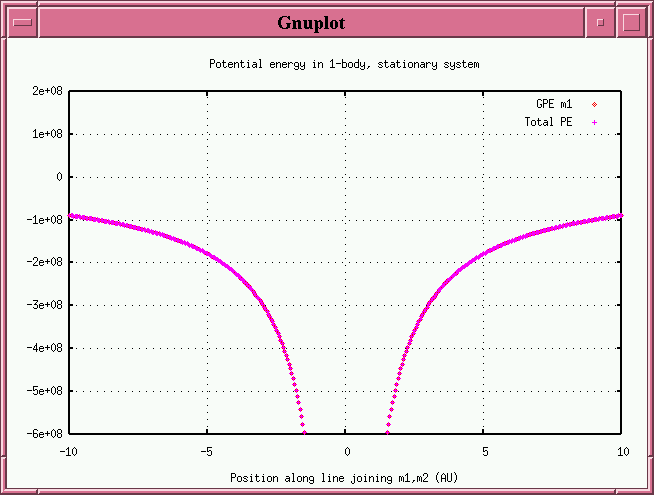
Two bodies, no rotation.
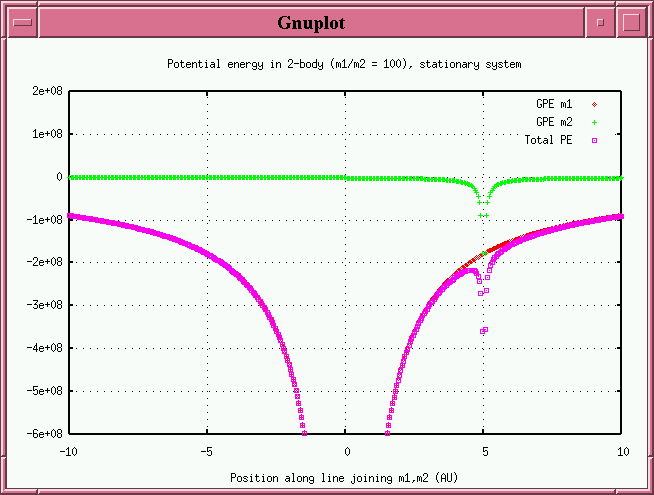
One body, with rotation.
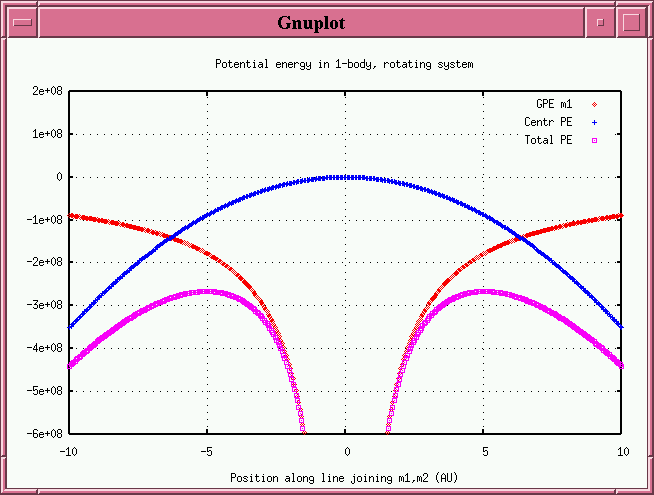
Two bodies, with rotation.

Around a circle centered on big mass
One body, with rotation.
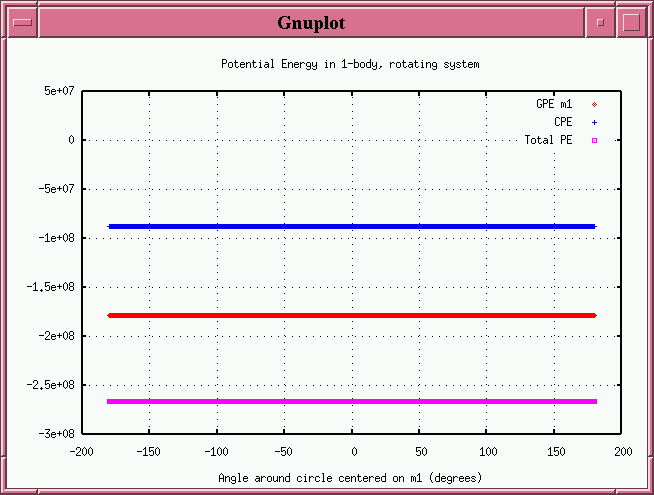
Two bodies, with rotation.

Zoom in closer, two bodies with rotation.
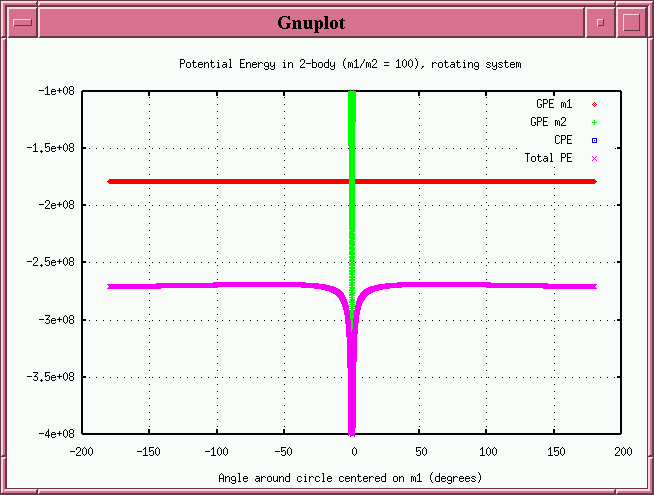
Zoom in closer, two bodies with rotation.
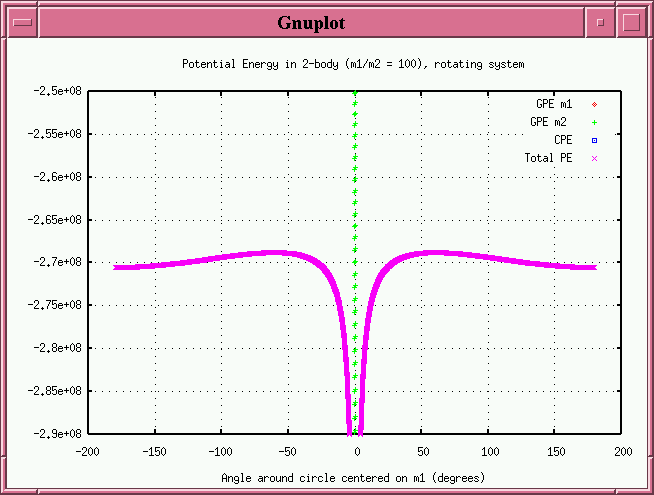
Zoom in closer, two bodies with rotation.
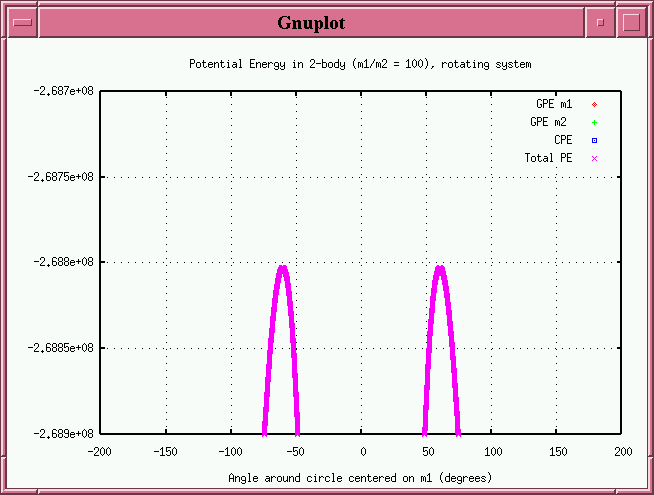
Lagrange points in action
Look at locations of asteroids in solar system.
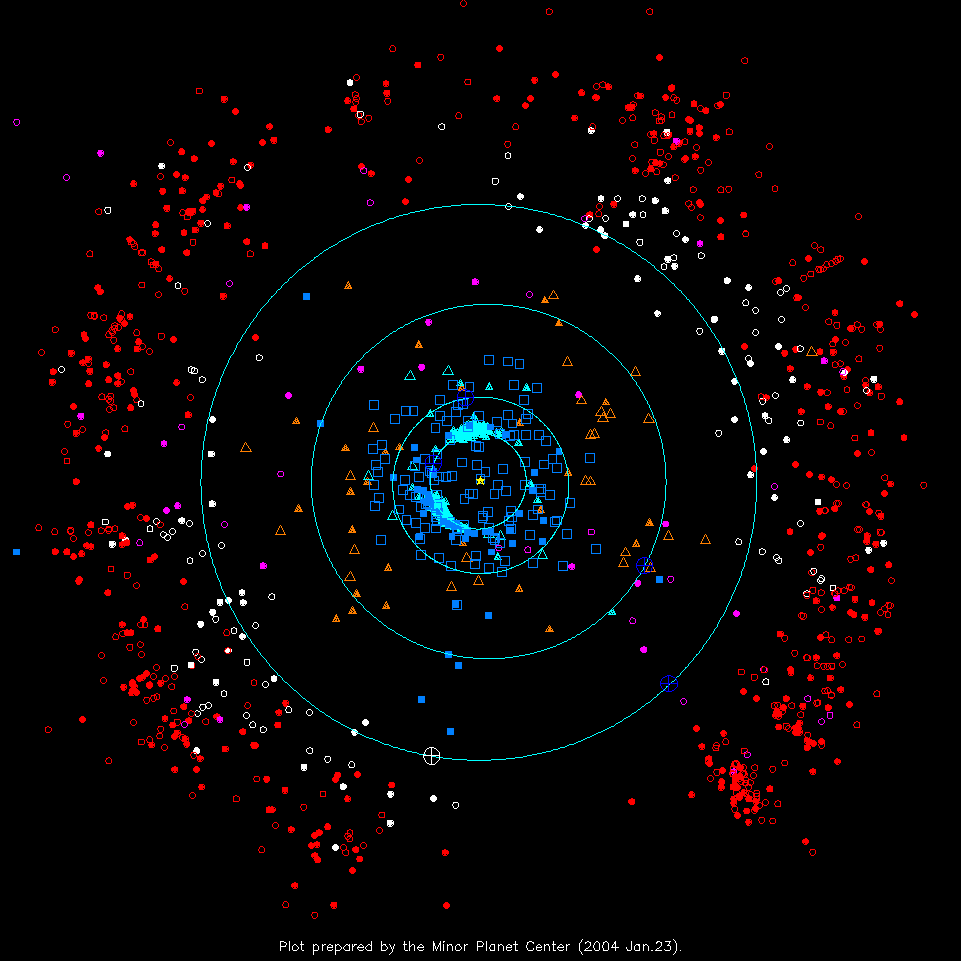
The SOHO satellite is close to the Earth-Sun L1 point.
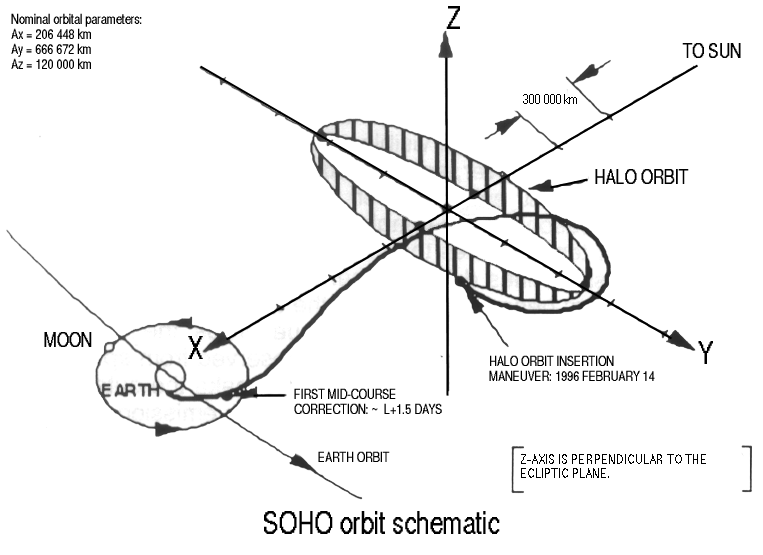
For more information
- A discussion of the Lagrange Points from SOHO's web site. Thanks to Neil Cornish.
- Technical derivation and analysis of the Lagrange Points, again by Neil Cornish.
- John Baez's page on the Lagrange Points (John is a mathematical physicist at UC Riverside)


